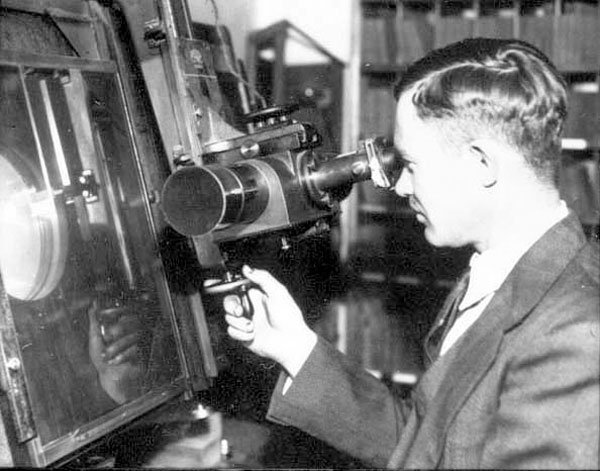Feb. 7: Moon and Stars
The waxing gibbous Moon stands high above Orion, the hunter, in
mid-evening. The bright star Capella, which shines yellow-orange,
stands high overhead, on the opposite side of the Moon from
Orion.
The University of Texas McDonald Observatory Online
Feb. 7: Moon and Stars
The waxing gibbous Moon stands high above Orion, the hunter, in mid-evening. The bright star Capella, which shines yellow-orange, stands high overhead, on the opposite side of the Moon from Orion.
Feb. 8: Orion Nebula
The Orion Nebula, which is one of the largest stellar nurseries in the galaxy, sails across the south tonight. It is below Orion’s Belt – a short row of three stars that stands due south around 8pm. The nebula is below the belt, and looks like a fuzzy star.
Feb. 9: Jumbo Star
The star Betelgeuse stands at the northeastern corner of Orion, which is high in the south this evening. Betelgeuse is a bright orange star to the upper left of Orion’s Belt. It is one of the largest and brightest stars in our region of the galaxy.
Feb. 10: Moon and Saturn
The bright golden “star” below the Moon this evening is really Saturn, the second-largest planet in the solar system. Pollux and Castor, the “twins” of Gemini, stand above the Moon.
Feb. 11: Moon and Saturn II
The planet Saturn appears quite near the Moon tonight. It looks like a bright star, with a bit of a golden color. Saturn is to the upper right of the Moon at nightfall, and they will pass almost directly overhead around midnight.
Feb. 12: Full Moon
The Moon is full at 10:44pm. It lines up opposite the Sun in our sky, so it rises around sunset and sets around sunrise. Sunlight illuminates the entire lunar disk. February’s full Moon is known as the Snow Moon, Hunger Moon, or Wolf Moon.
Feb. 13: Moon and Regulus
One of the brightest stars in the night sky keeps company with the Moon tonight. The star is Regulus, the “heart” of Leo, the lion. It’s a little to the upper right of the Moon as they climb into view in early evening.













